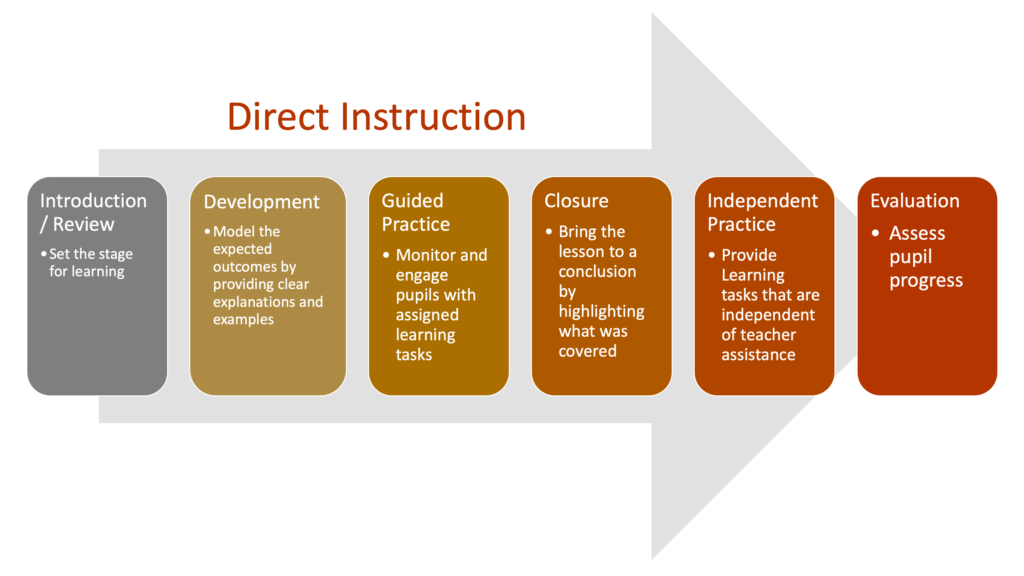
Overview of Direct Instruction
The teaching approach known as “direct instruction” focuses on lessons that are structured, sequenced, and led by teachers. The idea behind direct instruction is that precise instructions prevent misunderstandings, which can significantly improve and speed up the learning process. Although the direct instruction method is frequently employed in lectures in classrooms, it actually spans a wide range of essential teaching strategies and prospective teaching situations. For instance, showing a movie or film to pupils can qualify as direct teaching because the instructor chose the material’s content and method of presentation. Since teacher-designed and teacher-led instructional approaches are popular over the globe, direct instruction may be the most extensively utilized teaching strategy overall[1].
In comparison to any other existing programme or approach, DI guarantees students learn quicker and more effectively because to four key characteristics:
- Instruction is matched to the ability level of the students.
- The program’s layout is intended to guarantee content mastery.
- Instruction is adjusted to fit the pace at which each student learns.
- Before being published, programmes are field tested and revised.

How Direct Instruction aligns with our topic of Parkinson’s Disease.

Whether it is educating the PD patients or other people about Parkinson’s disease, direct instruction is the best approach to utilize. Direct instruction utilizes planned and structured teaching which can help people with Parkinson’s disease understand well to manage their medications–and thus their symptoms–more effectively. The DI technique takes into account each person’s aptitude level, guarantees the mastery of the content, and adapts instruction to each student’s pace of learning. Given the aforementioned reasons, including the strategy taking into account to guarantee that people learn more quickly and effectively, direct instruction is the method we chose and will be incorporated in our final Interactive Learning Design.
References:
[1] https://www.structural-learning.com/post/direct-instruction-a-teachers-guide
Hi Abdul,
Thank you for sharing your insight on the overview of direct instruction and how it speeds up the learning process. I especially liked how you showed a graphic to further interpret how direct instruction progresses. As for teaching Parkinson’s with direct instruction I see how it is effective in teaching the topic. Do you think there are any other teaching styles that would benefit Parkinsons?